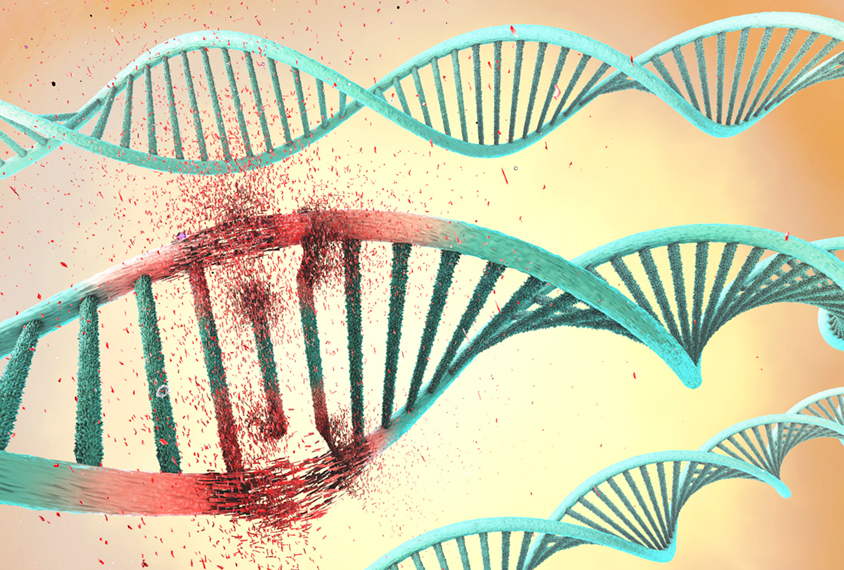
Autism-linked gene variants increase odds of attention deficit
A collection of rare genetic variants associated with autism and schizophrenia also seem to increase a person’s odds of having attention deficit hyperactivity disorder.
A collection of rare genetic variants associated with autism and schizophrenia also increase a person’s odds of having attention deficit hyperactivity disorder (ADHD), according to the largest study to explore this link1.
Researchers identified eight copy number variants (CNVs) — duplications or deletions of long stretches of DNA — that are more common in people with ADHD than in those without the condition. These same CNVs are also implicated in autism and schizophrenia.
The study, led by researchers at deCODE genetics in Reykjavik, Iceland, lends support to the idea that autism, schizophrenia and ADHD have similar biological underpinnings.
“There could be shared biological pathways, at least in a subgroup of [people with one of the conditions],” says Jan Haavik, professor of biomedicine at the University of Bergen in Norway, who helped gather the data for the study. “We know that all these psychiatric categories are very heterogeneous. It’s not a big surprise that the genetic factors are also highly heterogeneous.”
Scientists have linked a number of CNVs to autism and schizophrenia — and many appear to be involved in both conditions. But few studies have considered these variants’ roles in ADHD.
“The story hasn’t been that clear for ADHD,” says George Kirov, clinical professor of genetics at Cardiff University in the United Kingdom, who was not involved in the research. “I’m quite impressed with the paper. All the early-onset neurodevelopmental disorders seem to be associated with these same CNVs.”
Shared risks:
The deCODE team analyzed the genomes of nearly 9,000 children and adults with ADHD from Iceland and Norway. They looked for 19 CNVs previously linked to autism, schizophrenia or both.
About 2 percent of the ADHD group has at least one of the CNVs, compared with less than 1 percent of controls.
“I was somewhat surprised to see quite a clear enrichment in this group,” Haavik says.
This discovery suggests that these CNVs are present in about 1 in 50 people with ADHD — a remarkable statistic, says Anne Bassett, professor of psychiatry at the University of Toronto in Canada, who was not involved in the research. “I think that’s quite a finding.”
However, it’s difficult to know what to make of that result without more information about the people in the ADHD group, she notes. “The disappointment to me was that there was absolutely no data on [intellectual ability],” she says. “To really fully interpret the results, that would have been very helpful.”
Of the 19 CNVs, 5 are so rare that the researchers could not draw any firm conclusions about their association with ADHD, and 8 appear to significantly increase the odds of ADHD.
The study was published in October in Translational Psychiatry.
Minority of cases:
The CNV with the closest link to ADHD is a deletion of 22q11.21, a span of genes on chromosome 22. The deletion is nearly nine times as common in the ADHD group as in controls, and the duplication is more than twice as prevalent. Deletions are linked to both autism and schizophrenia, and duplications to autism.
Six other CNVs — duplications of 16p11.2, 16p13.11 and 1q21.1, and deletions of 15q11.2, 15q13.3 and 2p16.3 — also seem to be associated with ADHD, the researchers found.
Kirov praised the study for its size but cautioned that these particular CNVs appear in a relatively small proportion of people with ADHD. “It explains only a minority of cases,” he says. Other CNVs or genetic mutations may also contribute to ADHD.
Still, the findings suggest that doctors ought to screen people with ADHD for these CNVs and, conversely, begin screening people with these CNVs for ADHD.
The results jibe with those of another study published in October that scanned the genomes of 2,691 people diagnosed with one of four conditions: autism, schizophrenia, ADHD and obsessive-compulsive disorder2. Nearly 11 percent of these people have at least one rare CNV, the researchers found. And a number of these CNVs — including many of those flagged by the deCODE study — are linked to more than one condition.
References:
Recommended reading

Expediting clinical trials for profound autism: Q&A with Matthew State

Too much or too little brain synchrony may underlie autism subtypes
Explore more from The Transmitter

Mitochondrial ‘landscape’ shifts across human brain

